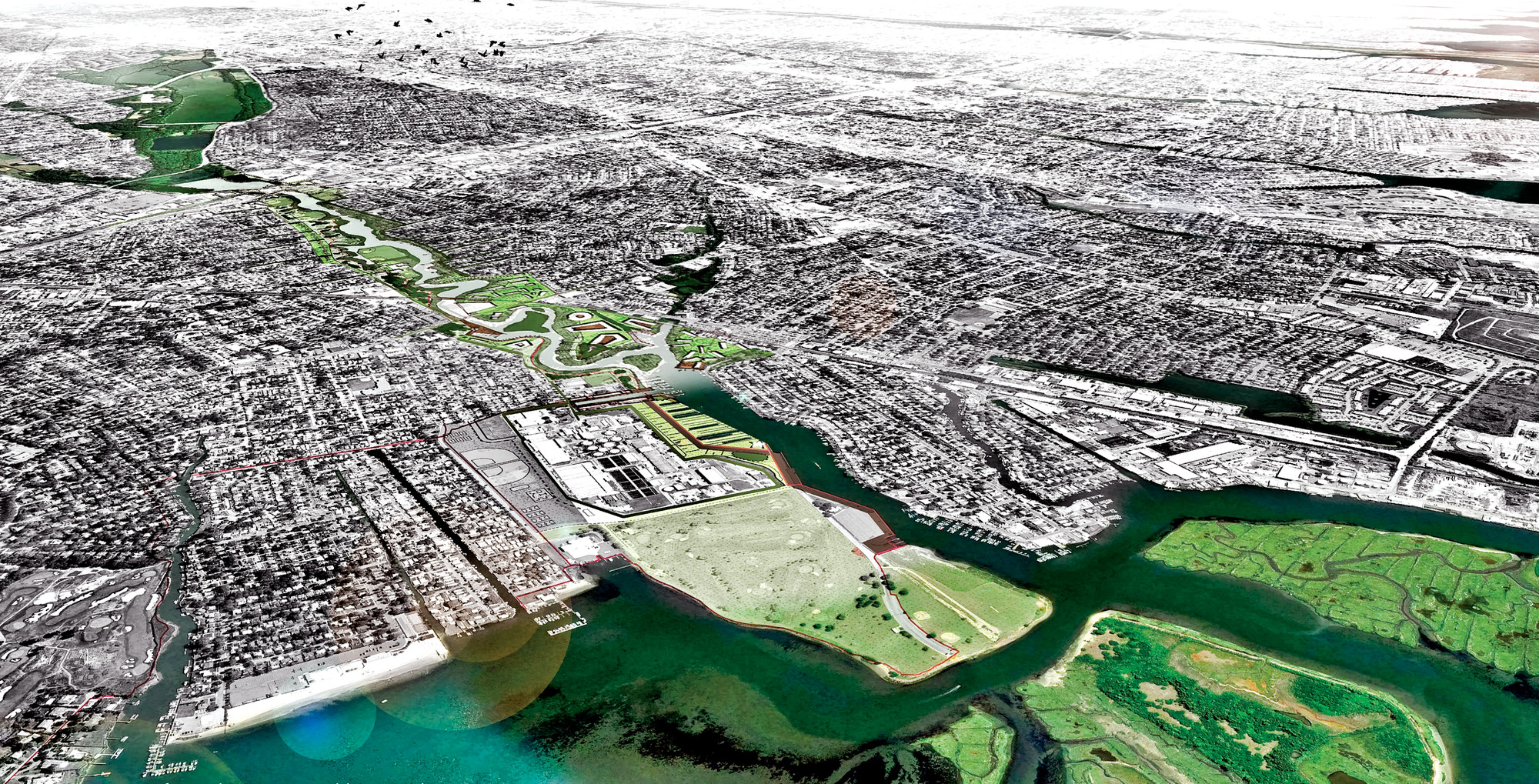Living with Mill River
$125 Million resiliency plan to incorporate natural elements
The $125 million Living with the Bays project — a winner of the U.S. Department of Housing and Urban Development’s Rebuild by Design contest following Hurricane Sandy — is still on track, though the specifics of the plan are taking a different shape than initially proposed.
The original project, which received a $125 million grant from HUD in June of 2014, was extremely broad in scope. Too broad, in fact, for the award it received. Over the year since, the Interboro Team, a collaboration of Dutch and American designers, which won the competition, has narrowed its focus, and has come up with new ways to make the Mill River area — the river that runs from Hempstead Lake south to East Rockaway Channel — more storm-resilient.
Many of the details of the new plan have yet to be revealed. Kris VanOrsdel, the director of information and local government for the Governor’s Office of Storm Recovery, which is overseeing the project, said he hopes the plan will be released by Thanksgiving. It retains the intent of the original plan, he said: to rebuild the Mill River communities to be stronger than they were.
“We don’t want you to rebuild back the way you were before,” VanOrsdel said. “We want you to rebuild in ways that make communities more resilient, that focus on how to use innovative, natural measures.”
The new focus, VanOrsdel told the Herald last week, is on using natural methods to make communities more resilient. This would help rebuild Mill River’s ecosystem and the southern bays at the same time it helps surrounding communities.
The plan now has three parts: a north section, focusing on and around Hempstead Lake; a middle section, concentrating on the Mill River itself and storm-water mitigation, in cooperation with the Village of Rockville Centre; and a southern section, in which the initial plan for a sluice gate at the southern end of the river has been replaced by restoration of the coastal area to reduce the effects of storms.
“We took the project north,” VanOrsdel said, “and [it] now basically incorporates the entire Mill River watershed, running from north of Hempstead Lake State Park … all the way down to the barrier islands.”









